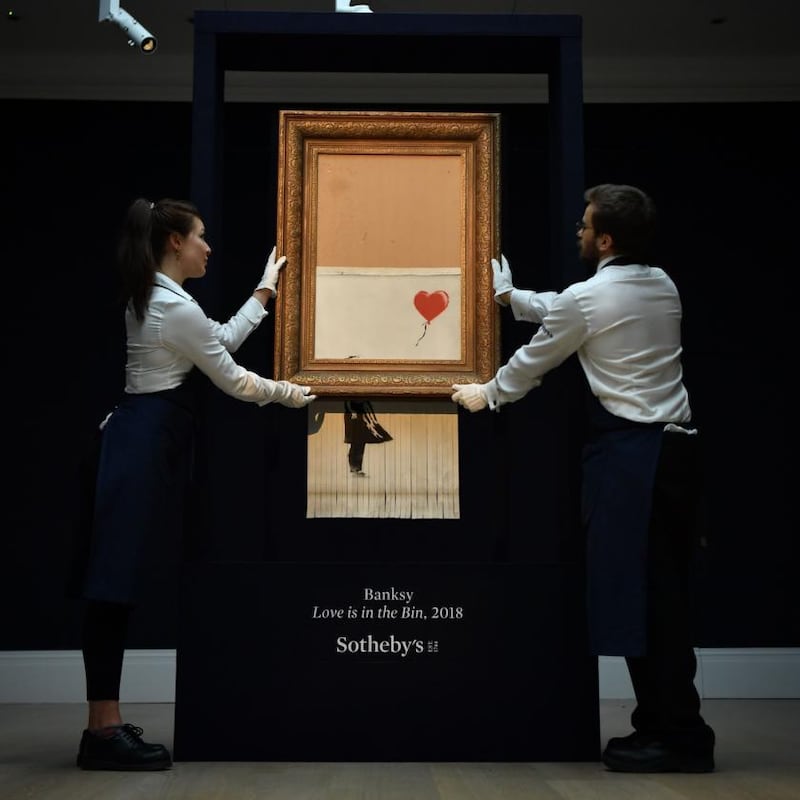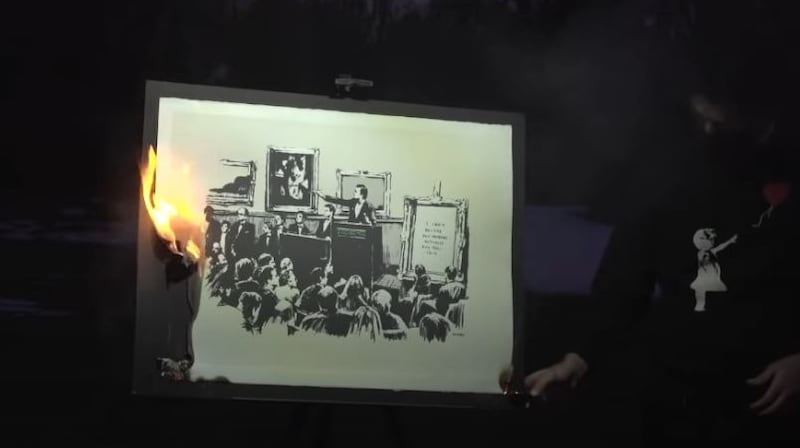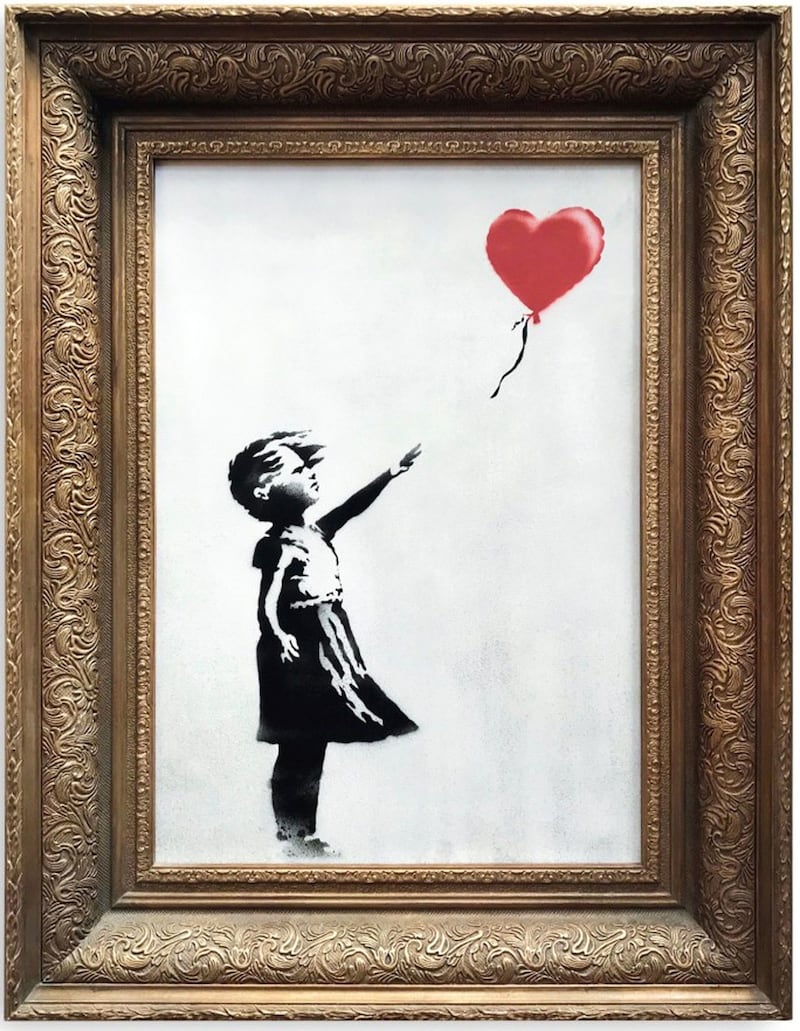It has been quite an incendiary week for Irish traders due to the fallout and resignations triggered by the recent Davy 16 scandal. The art world was also ablaze this week when a group of financial traders in the blockchain industry purchased a Banksy artwork for $95,000 (€79,900) and set it on fire.
Injective Protocol, a three-year-old company that runs a decentralised platform for blockchains (open online networks that store ledgers of digital transactions), bought the screen-print entitled Morons from the Taglialatella Gallery in January. This week they took a match to it in an undisclosed location in New York and live-streamed the burning through a Twitter account called BurntBanksy. The work carried Banksy's signature and was authenticated by Pest Control, the artists' only certification company.
But it gets far more interesting or absurd – depending on your viewpoint – as the video that captured the burning of the work, which was one of a 500-print run, sold in the virtual world for $380,000 (€317,900) within days.
It may raise eyebrows that it was a work by Banksy, the anonymous English street artist and political activist, who himself was involved in a stunt which took the art world by storm in 2018. At a Sotheby’s sale in 2018, just as the hammer fell on Girl with Balloon, for which the buyer paid in excess of £1 million (€1.17 million), the piece went through a shredder in the frame. The buyer “began to realise that I would end up with my own piece of art history” and, with the new title Love is in the Bin for the shredded work, settled the bill.

Memorial
So what was the goal of burning the Banksy piece? Through their spokesman, Mirza Uddin, the traders said it was "as an expression of art itself" and that the "physical piece will be forever memorialised" (albeit in a video of burning a signed print).
But cynics might beg to differ and suggest that, a bit like the artist himself, it was merely an antic to gain notoriety. There is also the notion that they were aiming to highlight a new form of digital assets known as non-fungible tokens (NFTs). Nothing to do with mushrooms, these are new registrations of ownership of a digital object online, which can be in many media, such as art, videos, music and online games. The non-fungible part means the object is unique and therefore irreplaceable, unlike cash or cryptocurrency, but it lives in the virtual world.

Twitter's co-founder Jack Dorsey is also entering the NFT marketplace selling his first ever tweet – its current bid is at $2.5 million (€2.1 million).
Before you guffaw at the notion, a work by Beeple, the graphic designer whose real name is Mike Winkelmann, sold on Thursday for nearly $70 million (€58.5m) at Christie's, in the first ever sale by a major auction house of a piece of art that does not exist in physical form. "Everydays - The First 5000 Days" is a digital collage of 5,000 individual images, made one-per-day over thirteen years. The sale put Beeple in the top three most valuable living artists, Christie's said.
While there is no denying that digital art is a medium, would you pay for something intangible, such as a video or digital rendering, that can be seen by millions online? Some critics have suggested that all you really have is a serial code linked to a blockchain database.
Wolf of Wall Street
James O’Halloran of Adam’s Auctioneers says: “Younger people will embrace video as art much more easily than people of my generation and they will ‘get’ the concept of the burning Banksy much more readily than those of us with more traditional notions of what art is.”
The burning of the Banksy work and selling the virtual video on "is like a scene out of The Wolf of Wall Street", according to auctioneer Ian Whyte, and O' Halloran "is delighted when stories like this emerge as at least it gets people talking about art".
When it comes to the torching of the print, O’Halloran says: “Rightly or wrongly, the act of destroying this artwork, of which there are many more copies, is creating, in viewers and readers of the story, a reaction and that is where the art exists.”

International seller Christie’s is the first of the traditional auction houses to enter the foray of this new marketplace with their Highsnobeity collection of non-physical art, which they say is “on the threshold of becoming the next ingeniously disruptive force in the art market”. While buyers will not walk away with something they can physically hold, these NFTs are “encrypted with the artist’s signature and the ownership is permanently attached to the piece”.
If you are trying to decide if the burning of the Banksy is art or con artistry, it may well be worth noting that the work – cremated by the traders and selling for three times its original price – was originally sold entitled I Can’t Believe You Morons Actually Buy this S**t.

















